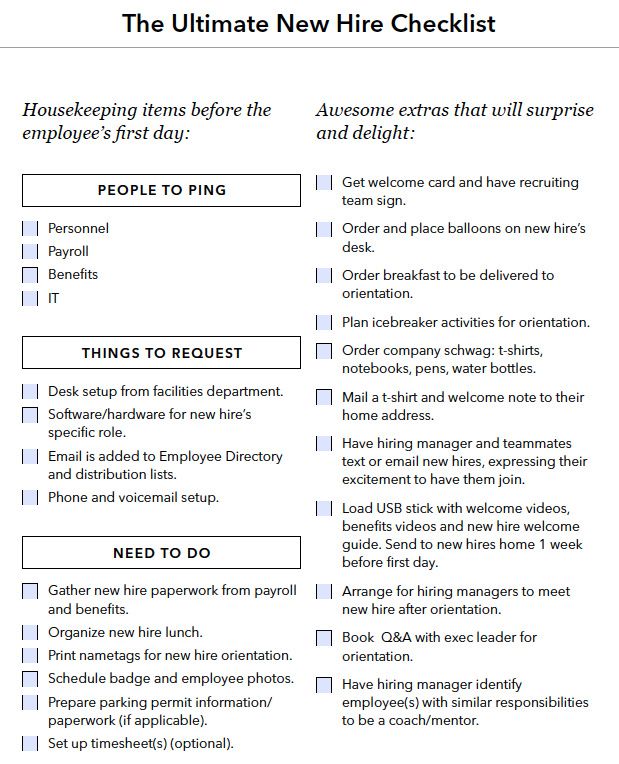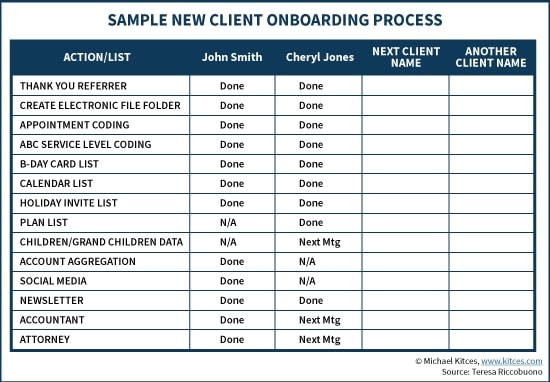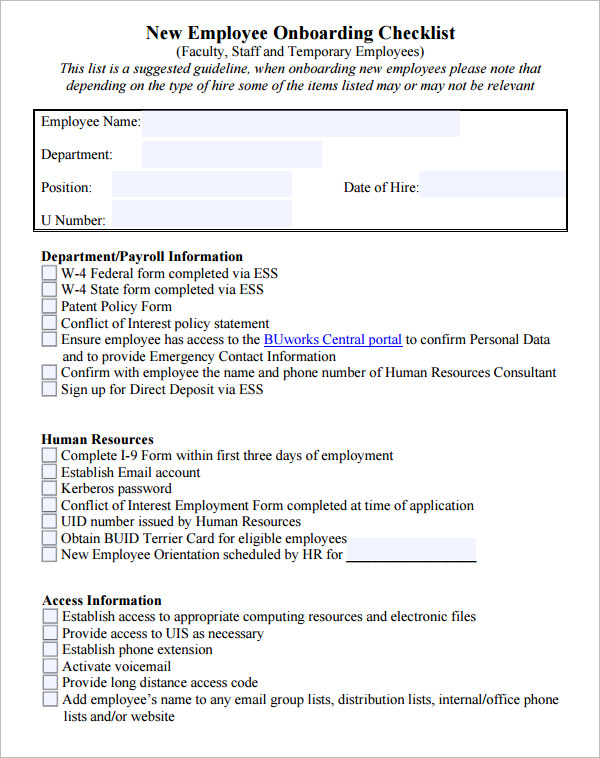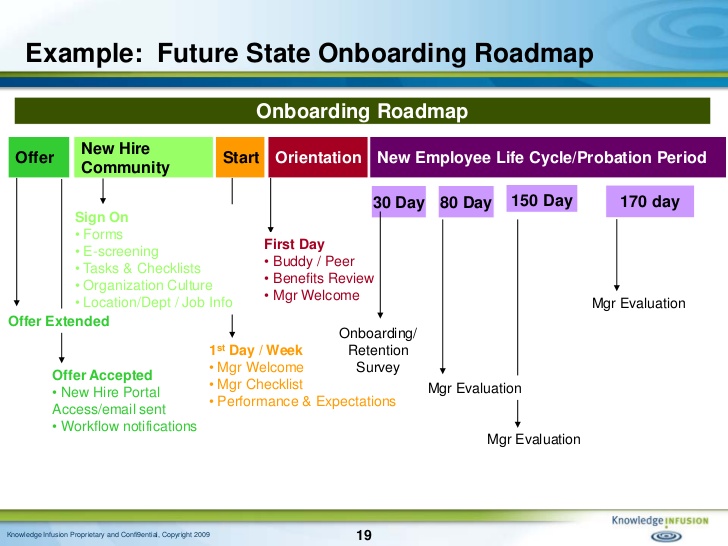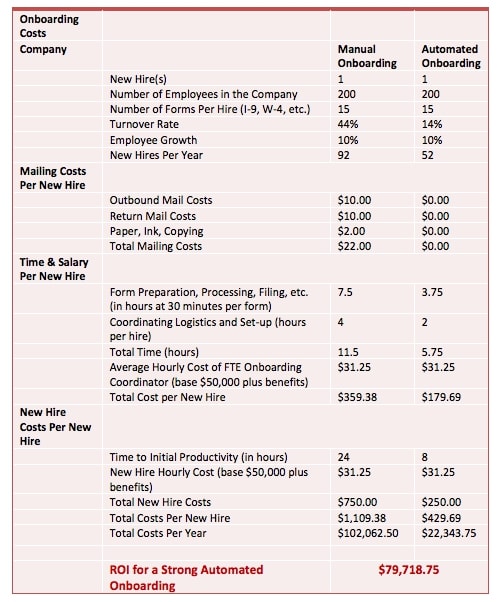18+ Onboarding 30 60 90 Day Plan Examples to Download
How do you make sure an employee who starts his or her first day in the company doesn’t get lost around the office or manages to initially get along well with his coworkers? Well, onboarding answers all those new employee problems. You may also see daily plan examples.
30 60 90 Day Plan Template
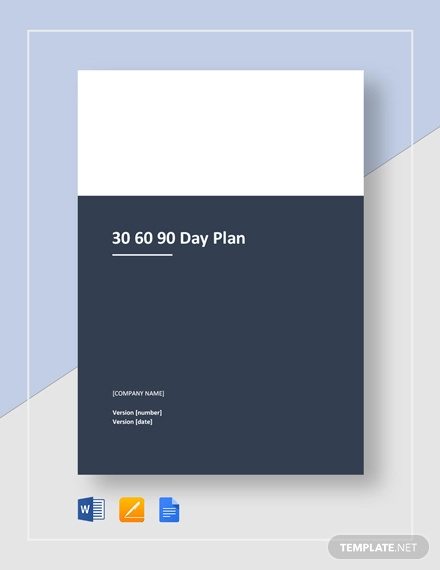
Here’s a premium 30 60 90 Day Plan Template for you to use so that you can conveniently schedule your day-to-day program for a business project. This professionally designed template allows you to make a document that can help you achieve your goals better while also maximizing your time and effort on a 30, 60, or 90-day basis.
30 60 90 Day Sales Plan Template
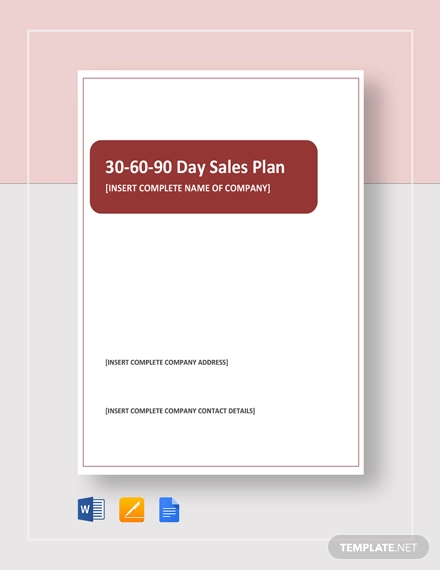
Make a checklist of the plan to be followed for the improvement of your company sales within the 90-day period by preparing a productive sales plan using our comprehensive 30-60-90 day sales plan template. This template outlines the important sales strategies that are to be implemented during the 90-day period. Fully customizable to cater to your document specification, one can download this template on their preferred software.
30 60 90 Day Business Plan
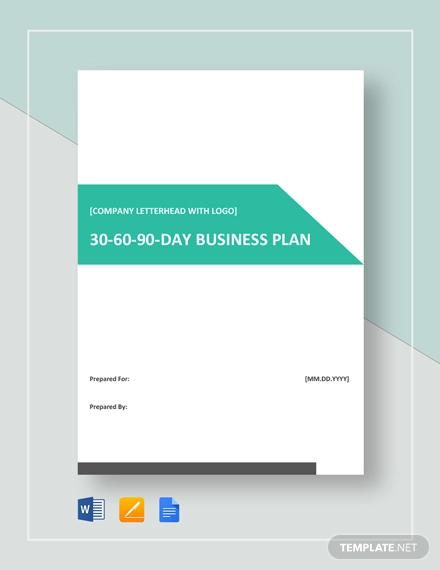
Determine the employee’s skill level and his/her transition in the business by using this 30 60 90 day business plan template. The objectives, purpose, and action plan to be carried out can be entered and customized in this template. This way, you will never miss out on any important business events and activities.
If you are in human resources and you get tasked to create a 30-60-90–day onboarding plan, here are some examples (in PDF format) you should use as a reference. We also included some tips on how to write an onboarding plan for your own business organization. You may also like weekly plan examples.
30 Day Action Plan
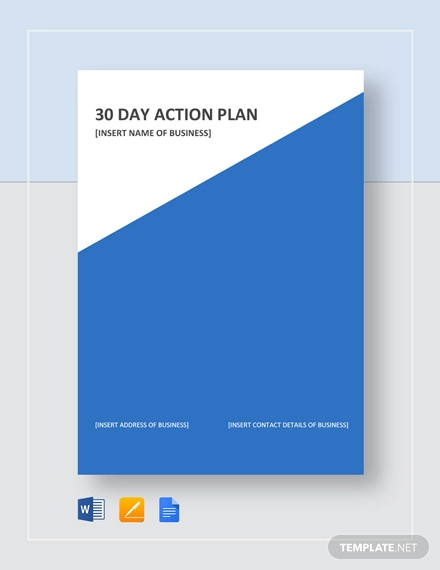
Onboarding Plan Example
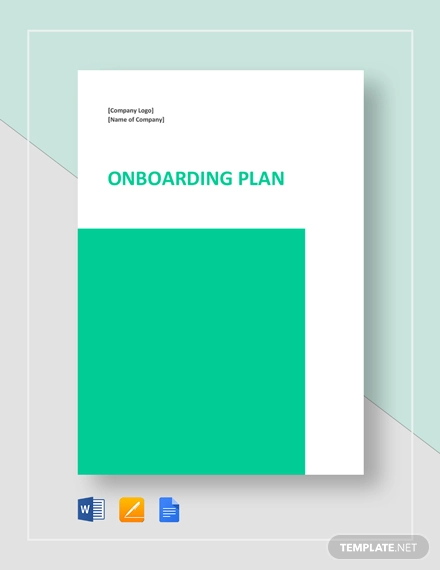
90 Day Sales Action Plan Example
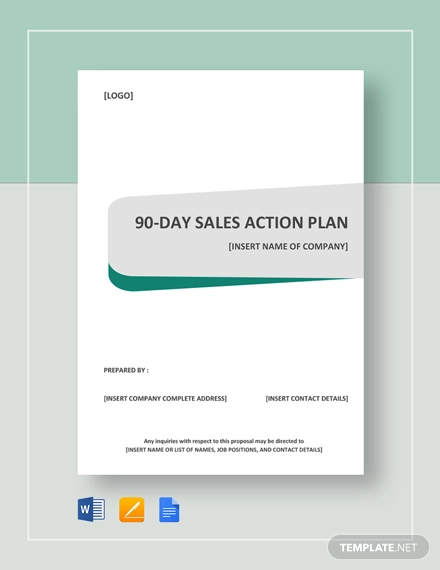
90 Day Plan Template
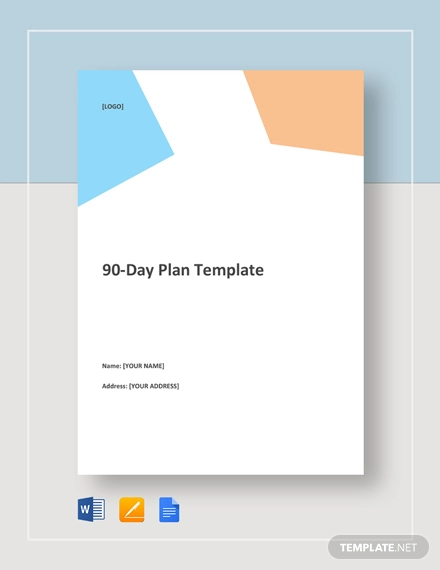
30 Day Plan Template
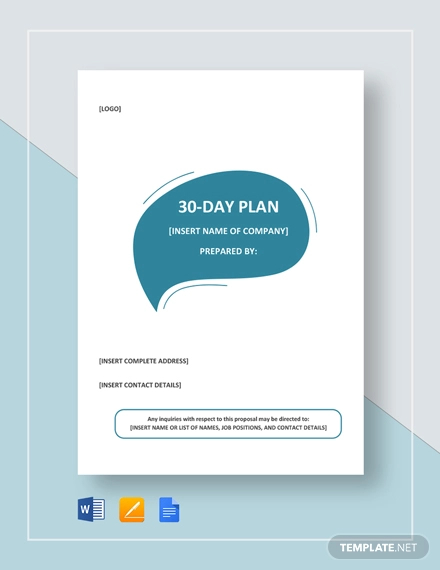
90 Day Business Plan
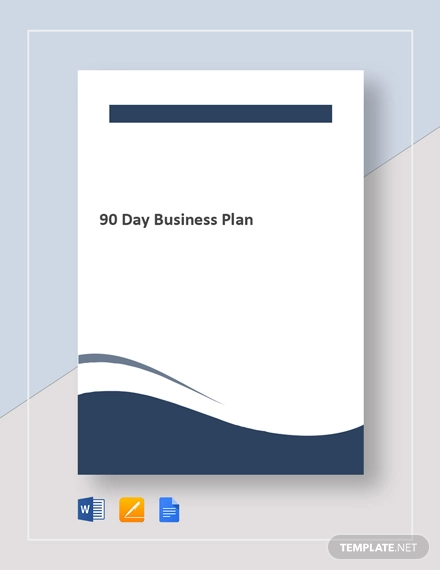
Free 30 60 90 Days Plan Template
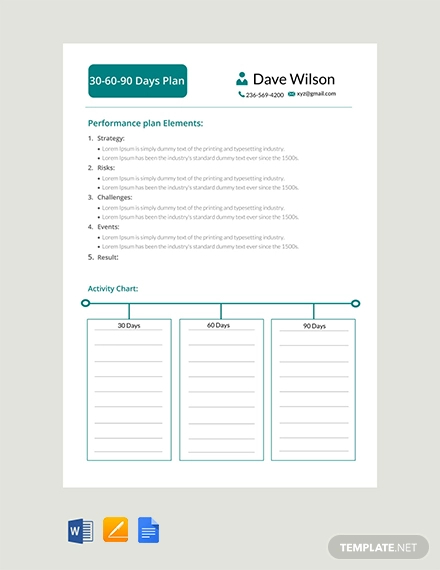
Free 30 60 90 Day Professional Development Plan
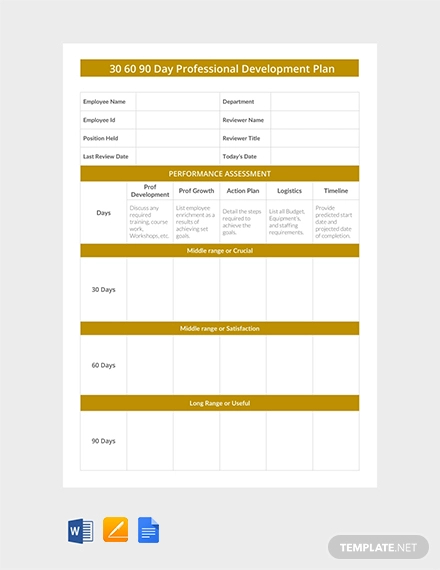
Free 30 60 90 Day Action Plan Template
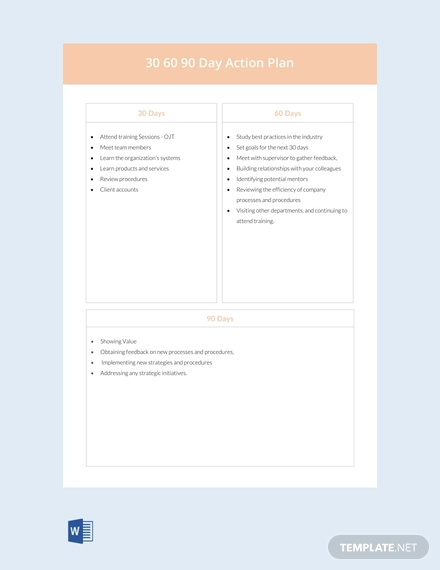
New Hire Onboarding Checklist Example
New Client Onboarding Plan Example
30 60 90 Day Onboarding Plan Example
Simple 30 60 90 Day Onboarding Plan Example
What Is an Onboarding Plan?
An onboarding plan is essentially a road map for new hires to help them adjust and eventually succeed in their new working environment. The onboarding plan is usually formulated by the human resource department (oftentimes the human resource manager) in collaboration with the company’s top executives (CEO, COO, managing director, etc.).
The onboarding plan specifically lists down what the new hire needs to achieve in his first few months with the company. Additionally, the onboarding plan should not only set the expectations of the new hire but also the team or department he or she will be assigned to. You may also see 90-Day action plan examples.
The onboarding plan should also be a reflection of the company’s culture and how it welcomes new members to the organization. A company that does not have a transparent and specific onboarding plan is usually a company that does not perform well in the industry it operates, or most likely experiences a high attrition rate. You may also like work plan examples.
Essential Components of an Onboarding Plan
Here are the components of a 30-60-90–day onboarding plan that you should incorporate in the onboarding plan you are creating for your own business organization.
There are some onboarding plans that unfortunately force new employees to learn all the company’s processes and specific tasks in 30 days. This is detrimental to the progress of the employee as he or she will be overwhelmed by the tasks assigned to him and will have to learn everything on the fly. You may also see risk plan examples.
The end result of an employee absorbing and applying new company information in less than a month is almost always never positive. This might cause the employee to hand in his resignation letter abruptly. That is the reason why a more effective onboarding plan should be divided by 30 days, 60 days, and 90 days.
1. 30 days
In the first 30 days of the onboarding plan, it should focus on the new hire getting to know the company culture, learning about the company’s products and clients, meeting with members of the team or department, undergoing training, and eventually starting to work on specific tasks and responsibilities. You may also check out transition plan examples.
The first 30 days of an employee is like a student entering his first day of class in a new school or university. He is unaware of the environment and the people. So he relies on the school principal or his class adviser to guide him through this new endeavor in his life.
Every professional who has experienced working in a corporate setting is fully aware of the first day or even first-week jitters that come when working in a new job. Even resigning already becomes an option even during the first day of work. That is the reason why an effective onboarding plan should be created to make the adjustment easier for the new hire. You might be interested in quality plan examples.
2. 60 days
The next 30 days will determine if the new hire will remain in the company for the long run. In this time frame, the said employee has already started to collaborate not only with his immediate team members but with other teams as well. You may also see sales plan examples.
Responsibilities will also have increased for the new employee, and will commence to attend regular meetings with his immediate manager or supervisor and his coworkers, while actively participating and giving inputs during the said meetings. You may also like annual plan examples.
Despite the new hire already starting to learn and apply work responsibilities, he is still prone to mistakes. Management should still be lenient and understanding if the said employee does commit errors.
3. 90 days
The last 30 days of the onboarding plan should focus on the new hire’s independence in the workplace. The employee should now take on more responsibility and work on bigger projects. When management was still lenient with the employee the previous two months, it won’t be the case anymore moving forward. You may also see project plan examples.
Aside from gaining more independence (as well as confidence), the last 30 days should make the employee more accountable for his work, as well as being more proactive not only in his tasks but also dealing with different personalities in the office. At this point, the employee will now be subject to a monthly performance review that will eventually determine if he will be approved for regularization or not. You may also like job plan examples.
Editable 30 60 90 Day Onboarding Plan Example
Effective Onboarding Plan Example
Sample Onboarding Plan Outline
You can now create your own onboarding plan with the tips and examples we provided. But to give you an idea what an onboarding plan looks like, we are presenting an outline of a 30-60-90–day onboarding plan below. Take note though that the outline is not a comprehensive onboarding plan, only a reference point when you will be eventually creating your own simple plan.
XYZ Corporation – Standard Onboarding Plan for New Employees (Regular, Contractual, and Interns)
The professional goal of this onboarding plan is to prepare the employee as he will be doing full-time work for XYZ Corporation. The preparation will include the tasks he will be working starting from his first day until the 90th day of his employment with the company.
Pre-employment requirements needed from new hire: medical certificate from an accredited health center, government identification numbers, motivated and optimistic employee.
Day 1–30 (Weeks 1–4)
1. For day 1, greet employee as he or she arrives in the office. If there are two or more employees starting on the same day, wait until all of them are present before proceeding to the next step.
2. Also in day 1, introduce the employee to immediate supervisor and team members. After they have been introduced, undergo training and orientation for the new hire. The training and orientation can occur for a few days or to a week depending on the tasks and responsibilities assigned to the new hire. The training should also involve the employee’s immediate supervisor or a senior team member. You may also see personal plan examples.
3. If there is no extensive training needed, the employee concerned should be transferred to his assigned team or department after the orientation.
4. Day 1 should also involve the new hire signing the employee-employer contract outlining the employee’s salary, responsibilities, and liabilities once he breaches the conditions of the simple contract. Also, retrieve the new hire’s medical certificate and government identification numbers.
5. After week one, check back on the employee and ask him how he is adjusting to his work as well as interactions with his fellow office mates. Also, set a meeting with the employee’s supervisor or manager and discuss with him the performance of the said employee. You may also like business plan examples.
6. Repeat the same process with the new hire and his manager for weeks 2, 3, and 4 respectively. Create an outline based on the information gathered from the previous four weeks.
Day 31–60 (Weeks 5–8)
1. On week 5, set a meeting with both the new hire and his immediate supervisor to discuss the performance of the employee.
2. Also on week 5, set a private meeting with the employee’s supervisor as well as some members of his team to discuss the said employee’s strengths and weaknesses (i.e., productivity, attitude, and areas where he needs to improve). You may also check out assessment plan examples.
3. Review new hire’s CV or resume and compare it with his current workplace performance and productivity.
4. On week 7, set a private meeting with the new hire and discuss with him his performance as well as concerns he has with his work responsibilities, coworkers, and superiors.
5. Reinforce company goals and mention the employee’s strengths to give him motivation and a boost in morale.
Day 61–90 (Weeks 9–12)
1. On week 9 and 12, set a meeting with new hire’s immediate supervisor or manager to discuss the performance of the employee concerned. If results are poor, another meeting should be held to discuss if the employee will undergo an improvement action plan. The meeting should include a discussion on the current tasks and future tasks of the new hire, attitude toward peers and superiors, leadership abilities, and abidance of company policies and procedures.
2. Also on week 9, set a meeting with the employee concerned and discuss with him his performance as well as concerns he has with his work responsibilities, coworkers, and superiors. Also, ask questions pertaining to the employee’s long-term goals and if it involves being with the company. You may also see event plan examples.



